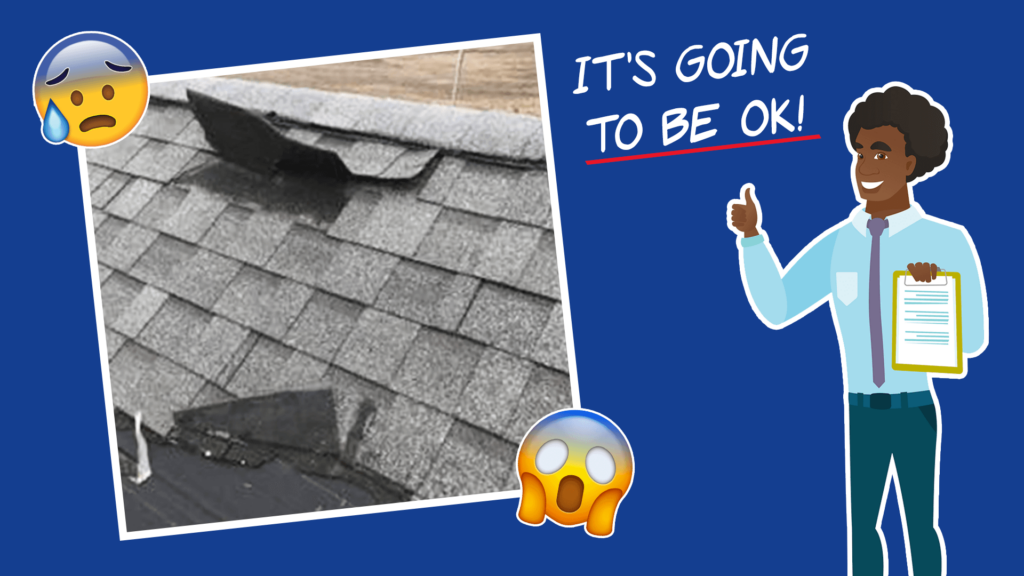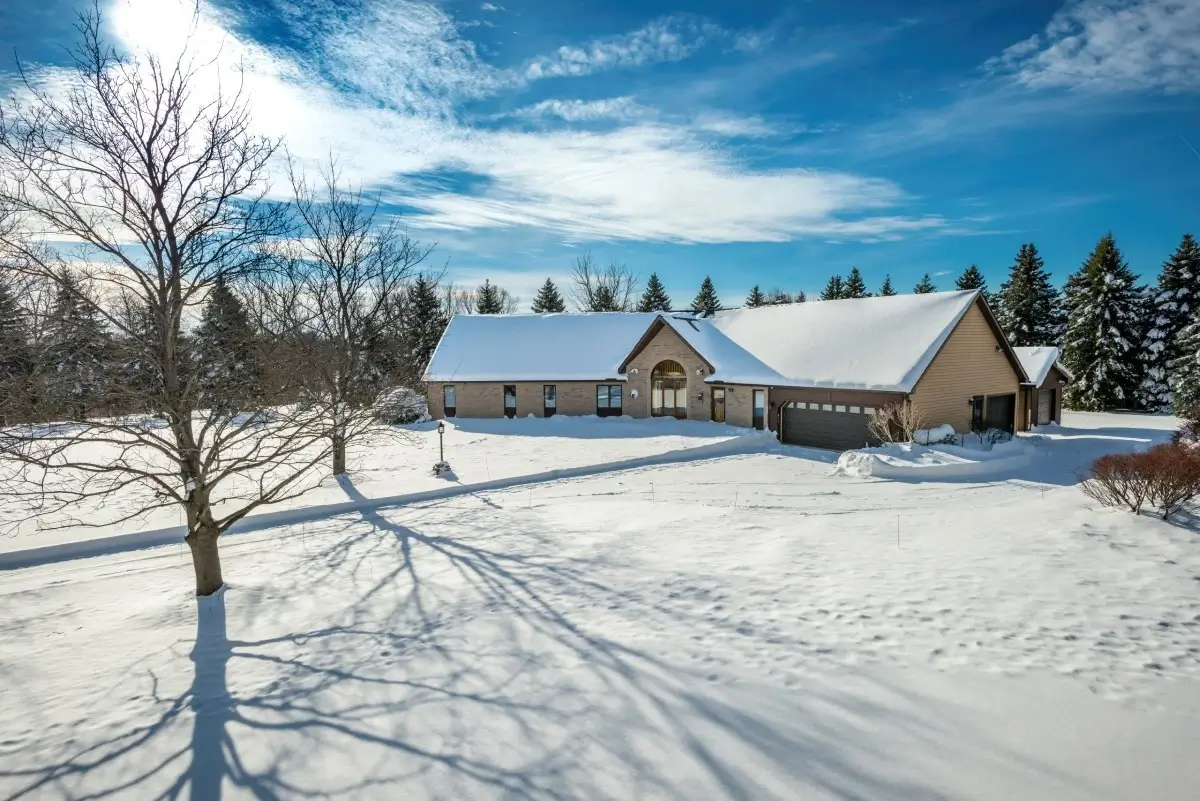So, your roof blew off. Or at least part of it. What now? Well, your first, reasonable response would be to freak out.
After all, all of your worldly possessions and the safety of your home and family, may well be at risk. But, that is probably an overstatement, unless a huge section came off, and even then usually there is an underlayment, such as felt for a temporary shield.
So, your second reaction will be to realize it’s going to be OK. In fact, probably better than OK. What? How’s that? Well, it’s a bad news, good news situation. The bad news is, your roof was probably not in perfect condition, if it blew off, right?
Well, the good news is, your insurance company is likely to come to your rescue. Assuming it’s a strong wind, your insurance should cover it. So, if that happens to you, reach out to your insurance company, and let them know.
Your agent may be someone to call first, to get their opinion as to whether filing a claim is warranted, and what the impact is likely to be on the cost, and viability of your policy going forward.
Typically, it’s an equation based on:
- The size of the claim
- Your deductible
- How many claims you have made in the past
If you decide to file a claim, it’s usually pretty simple to start.
What will you need?
- Your policy number. This will speed up the process.
Next steps will likely be the company sending an adjuster out. You will also need to get estimates from contractors. They also will usually pay to have your home temporarily tarped, or otherwise secured. Which, by the way, is a good idea. Since there is real risk that water could come in.
From here, it gets tricky. Insurance adjusters will use an estimate program to give you the cost.
Two issues with that are:
- Some adjusters are not as aware of what needs to be included in a roof project, and may miss some items like a shield, valleys, flashing, venting, etc. They also may chaff at wood replacement, and claim it’s not part of what the policy covers.
- The second problem comes in the estimate the Insurance program for the costs for the items needed. These prices are set, based on the typical roofing contractor
So what’s wrong with that? Well, the typical residential roofing contractor uses subcontractors, who use guys off the books. This gets around the very costly insurances, and matching taxes etc.
As no one in their right mind ever wants to actually buy a roof if they can help it, most don’t want to spend a thin dime more than they have to. The result of that reality is an overly cost conscious consumer, and low-cost, low-quality, high risk contractor offerings.
So, while we don’t blame the insurance company for their low-cost offerings, it isn’t in the best interest of you, the consumer. Why you ask? Why isn’t cheaper better?
Well, these people flying below the radar, are usually not well trained, and just trained in getting it done. Not a great recipe for quality. Hence, why many roofs blow off from bad installation or bad nailing.
Plus, they are not covered by roofers insurance. If they get hurt, they will sue you the homeowner. And, your homeowners insurance will not cover you.
Also, if in progress, a storm blows in and you have significant damage from leaks, you are not covered. So, while it’s understandable that the insurance companies use the low price estimate program they have, due to the way most contractors do business, it’s not good, or right for the homeowner.
So what do you need to know as a homeowner:
- You have a right to pick your contractor. The insurance company may or may not cooperate. A lot of homeowners won’t fight it and that’s what the insurance company counts on. Others, do fight and get better results.
The steps, if you find yourself in this situation, are two:
- First, demand more, to cover a legit estimate for the work.
- Second, contact the state insurance board, and the attorney general. And file a complaint.
The steps usually get results, but it is time consuming, and aggravating. On the bright side, while they do use the low numbers, they often will cover entire sections, or even a whole roof. Sometimes, they cover more than seems necessary or connected to the affected area. So, there is a plus minus that every person needs to know, and then choose their own path.
The good news is, also even if it’s not enough, it’s often at least half, and gosh darn it, that’s a lot better than footing the whole bill, if you were going to replace the roof before a blowoff happened.
The truth is, the insurance company’s vary greatly on how they respond. Some are generous, and some are stingy. A lot has to do with the adjuster you get.
Also, how many loss claims they are dealing with, will affect how loose they are with their money as well.
If the federal government gets involved, FEMA, that loosens them up as well, because they can get money back, reducing their loss.
So, if your roof blows off, don’t panic. And don’t call Urbanic. Just breathe, and know it’s an opportunity that is likely to work for you.
If, they don’t want to pay enough for a good contractor, you will have the difference to pay for. A good company will go to bat for you. And, having a contract with a contractor, gives you a much better bargaining position, than just having an estimate. You can set the contract up to conditions of receiving a certain percentage from the insurance company. One last thing, if your Insurance covers code compliance updating, they will cover updates like ice shield, ventilation etc. If you don’t, the variations of that, or any upgrades in product like shingles are also going to be on you.





